Finding the sweet spot in Crete
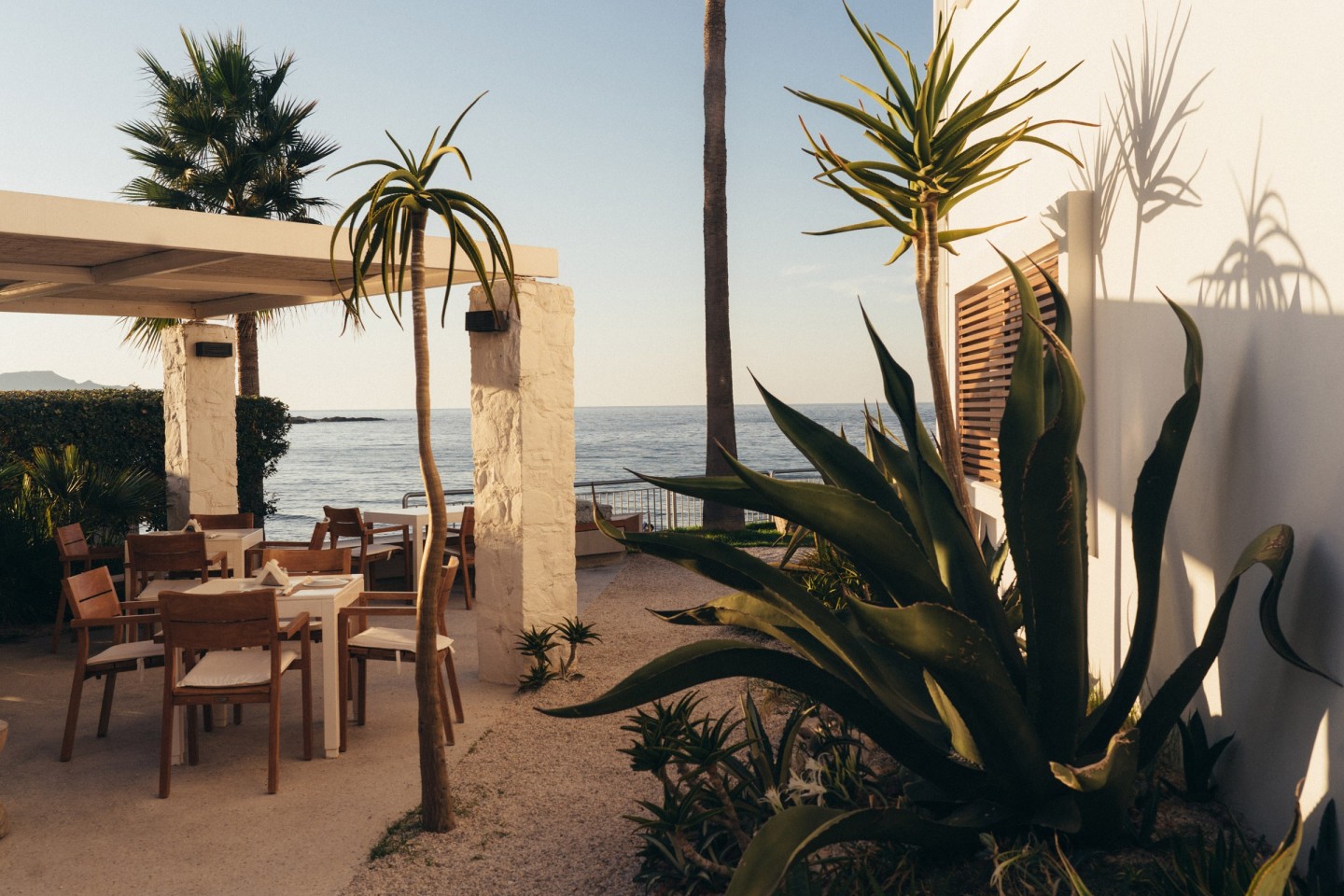
Roula Khalaf, Editor of the FT, selects her favourite stories in this weekly newsletter.
In the pantheon of Greek islands Mykonos is, naturally, the party-loving Dionysus, while by now art-world-favourite Hydra could be said to be Apollo, god of all things cultural. The Zeus of Greek islands, however, especially according to Greeks themselves, is Crete. Not just because of its size – at twice that of Mallorca, it’s the country’s largest – but because mythology holds that Zeus was born here, in a sacred cave full of bees. From around 3,000 to 1,100BC, Crete was home to the Minoans, one of the western world’s most advanced ancient civilisations, whose traces can be admired at the Palace of Knossos as well as within the island’s impressive archaeological museums.
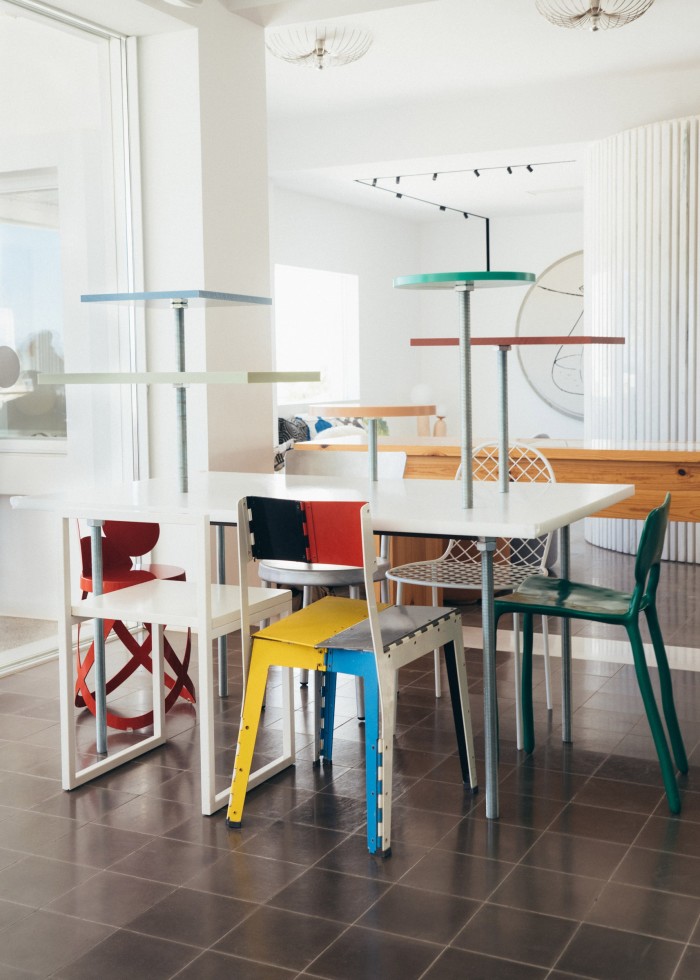
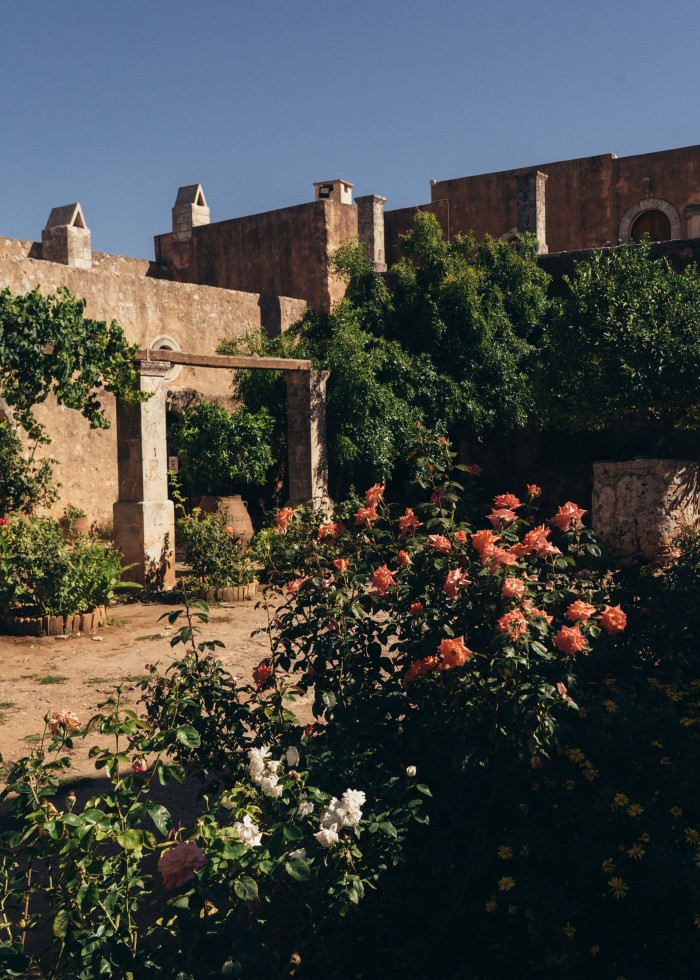
But despite that lofty pedigree, Crete is often misunderstood. It has struggled to shake a reputation as a place spoiled by over-development, when in fact this is only true of the north-east of the island, near Heraklion. Much of the rest, in particular the south coast and the far edges of the island, is still wild and untouched, characterised by a diversity of striking natural landscapes. One can ski the snow-capped Lefka Ori mountain range in the winter; hike through gorges to hidden coves and swim in turquoise water almost all year long; and bump into shepherds while strolling through centuries-old olive groves. Exceptional food and wine, the products of Crete’s patchworks of small family farms, can be experienced at excellent tavernas both traditional and modern. And in and around Chania, the pretty historic port on the north-west coast, with its 16th-century, Venetian-era fortified walls, you’ll find a flourishing creative scene: old ruins have been transformed into bars, architectural studios and fashion boutiques, and traditional crafts, from leather-making to ceramics to textiles, are being reinvented and reinterpreted for contemporary tastes.
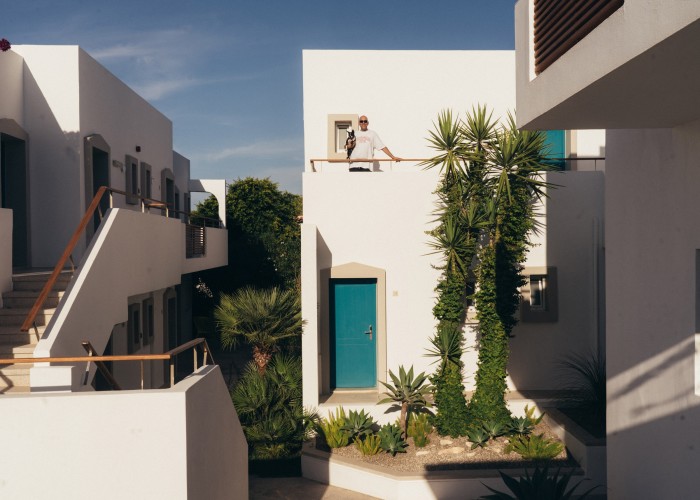
At the centre of this scene is the Cretan hotelier and art collector Nikos Tsepetis, a towering 53-year-old with a wry sense of humour and a perfectionist’s critical eye. Ammos is his intimate beach resort, whose Memphis-school inspired public spaces are filled with conceptual art pieces. This July he launched Red Jane, an ambitious bakery with interiors that resemble an art gallery (a collaboration with his friend the celebrated designer Michael Anastassiades), in a midcentury industrial building in Chania; locals and travellers alike have been lining up for baklava swirls and sourdough loaves.
Tsepetis is helping reshape Chania’s cultural landscape in good company. Decades ago the agronomist Manolis Kindelis brought experimental organic farming to a historic Venetian farm outside of town; today, it’s also a charming set of guesthouses called Metohi Kindelis. Irene Valyraki and Ioanna Koutsoudaki are sisters who opened a small hotel in the former Austro-Hungarian consulate called Doma, filling it with Cretan artefacts and global objets d’art.
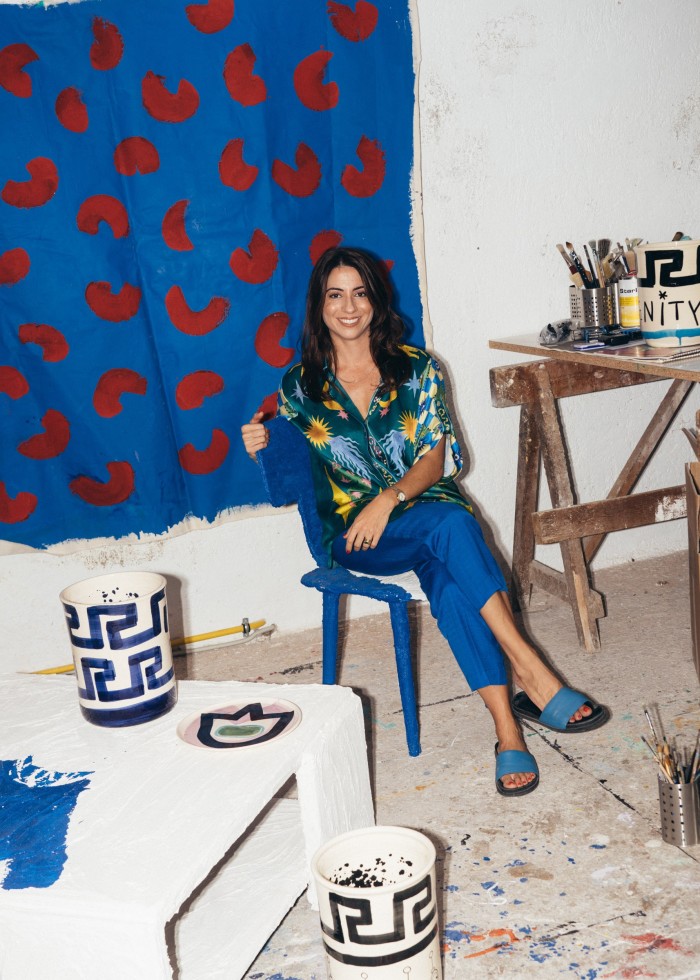
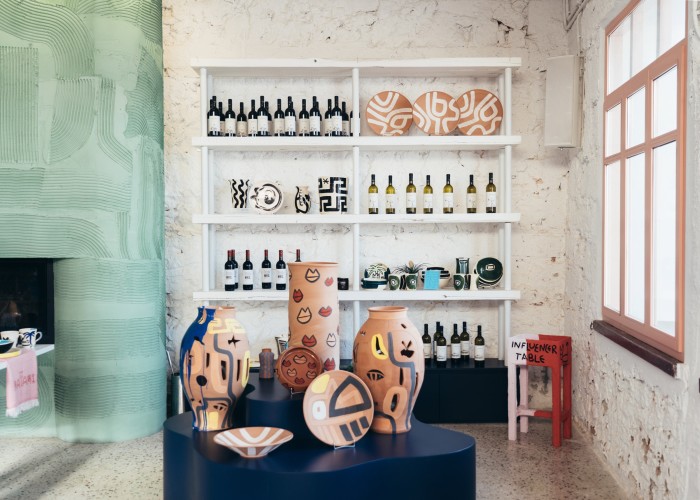
“There is a vibe here in Chania that is undeniable,” says Alexandra Manousakis, who moved to Crete from New York City almost 20 years ago. The enterprising Greek-American, together with her sommelier husband Afshin Molavi, runs several of Chania’s most fashionable restaurants. “It has been attracting artists for at least a generation or two.” She cites the American post-minimalist artist Cris Gianakos and the singer Evangelia and her partner Jay Stolar, who produce music influenced by the Cretan song traditions. “There is an energy here that people are gravitating to; they’re finding inspiration on the island, and evolving it.” The couple have opened three venues in the past few years: the upscale seaside taverna Salis; the modern souvlaki hangout, Abla; and Maiami, a lively bar-bistro overlooking the sea that also showcases Manousakis’s painting studio. “It’s an ode to the ancient world, but also to contemporary Crete. There are natural colour palettes and textures here that I find endlessly inspiring.”
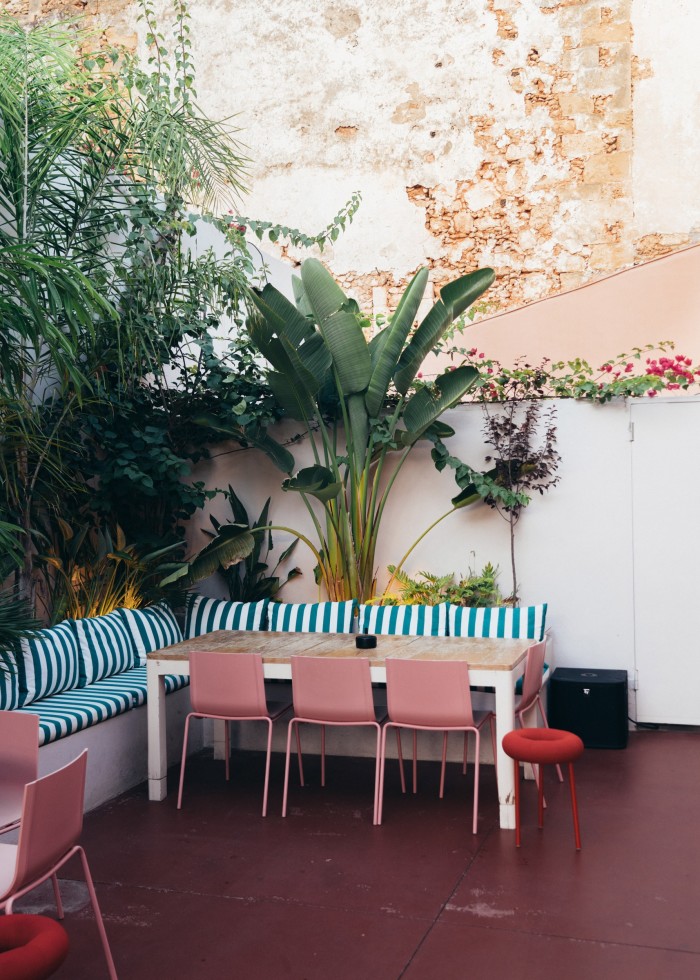
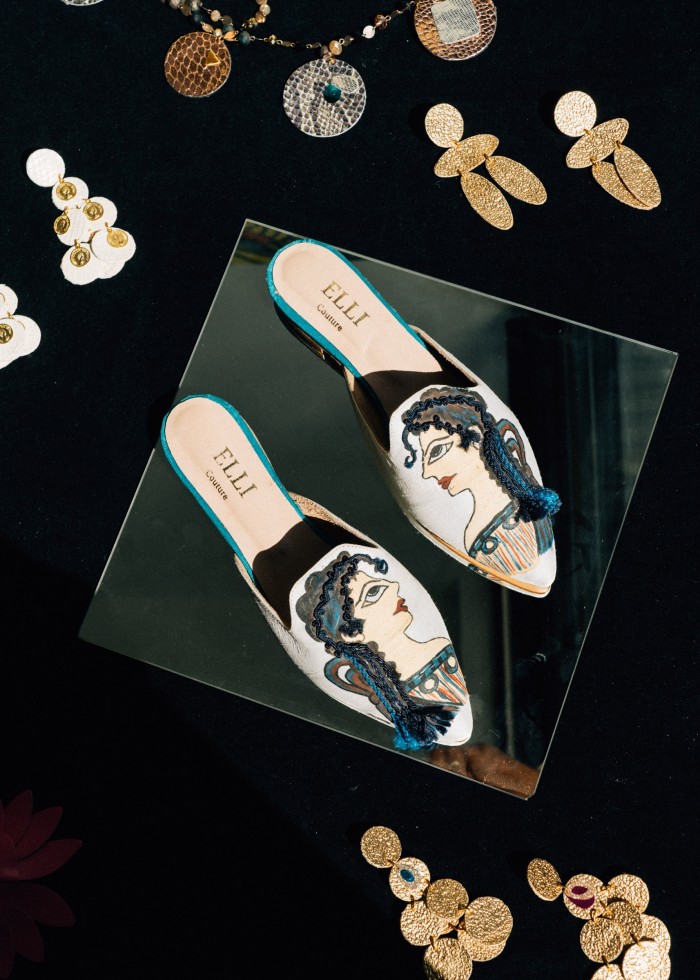
The bold colours, geometric forms and eclecticism that define the look of places like Ammos and Maiami – a sort of neo-Minoan aesthetic – are bubbling in a handful of other places. You’ll find it in the workshop and boutique of artist-designer Elli Lyraraki, who works with one of the area’s last traditional sandal makers, and who also crafts jewellery out of scrap leather to which she adds feathers and crystal beads.
It manifests in small fashion brands too: at Klotho, a workshop at the outskirts of Rethymno, another historical port about an hour’s drive from Chania, Alexandra Theohari designs textiles inspired by ancient Cretan symbols, woven on antique looms. Klotho is sold at, among other venues, the fashion boutique Meiz, located in Rethymno’s old town, which also carries a handful of other Cretan and Greek brands, such as Delina, whose elegant bags are studded with natural pearls.
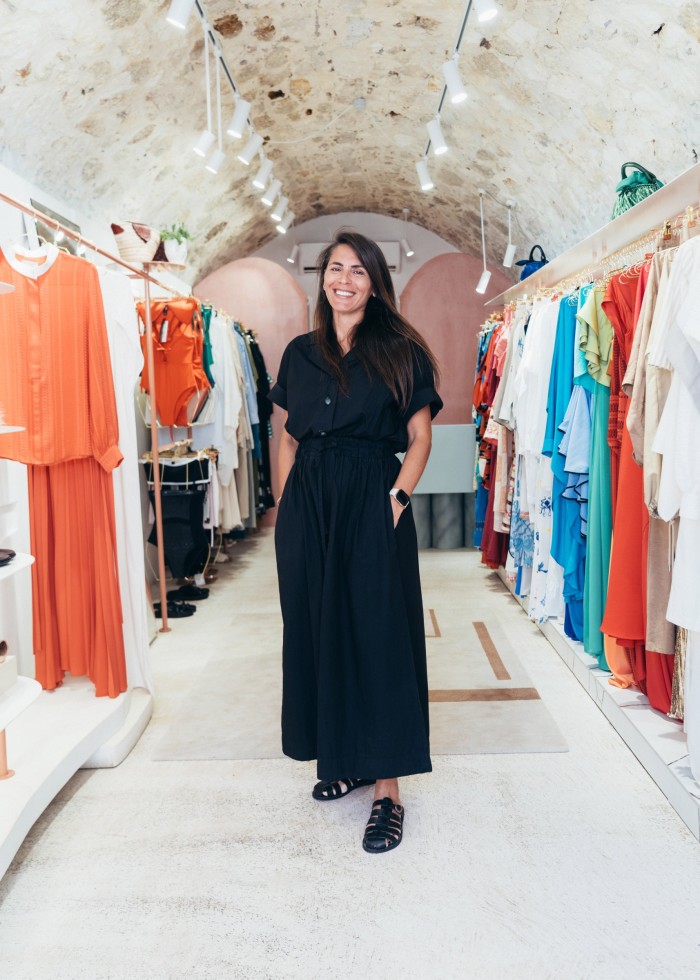
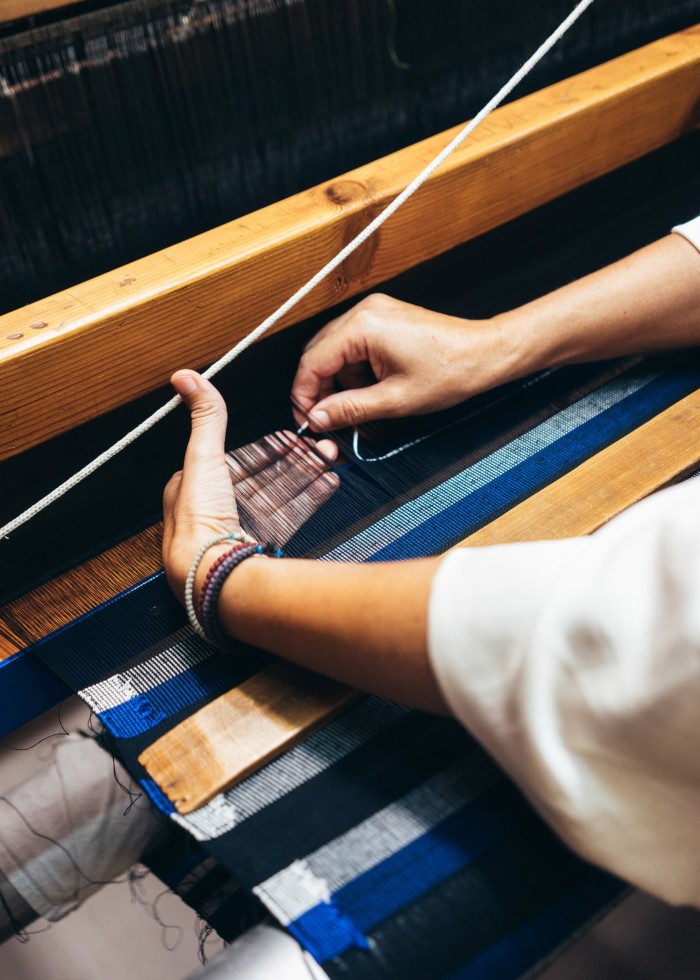
Athens-based design consultant Tina Daskalantonaki, who works with fashion label Zeus + Dione’s founder Mareva Grabowski to connect global brands with Greek craftspeople, recently travelled to Crete with Dior creative director Maria Grazia Chiuri. “Chania, because it has universities and an all-year-round population, and because it developed much later than other parts of Crete, has been allowed to evolve organically, outside of the tourist bubble,” Daskalantonaki says. “Just drive 20-30 minutes from here into the mountains, and everything is so pure and clean; there are still shepherds working, there are small family farms where the soil is still rich with minerals.”
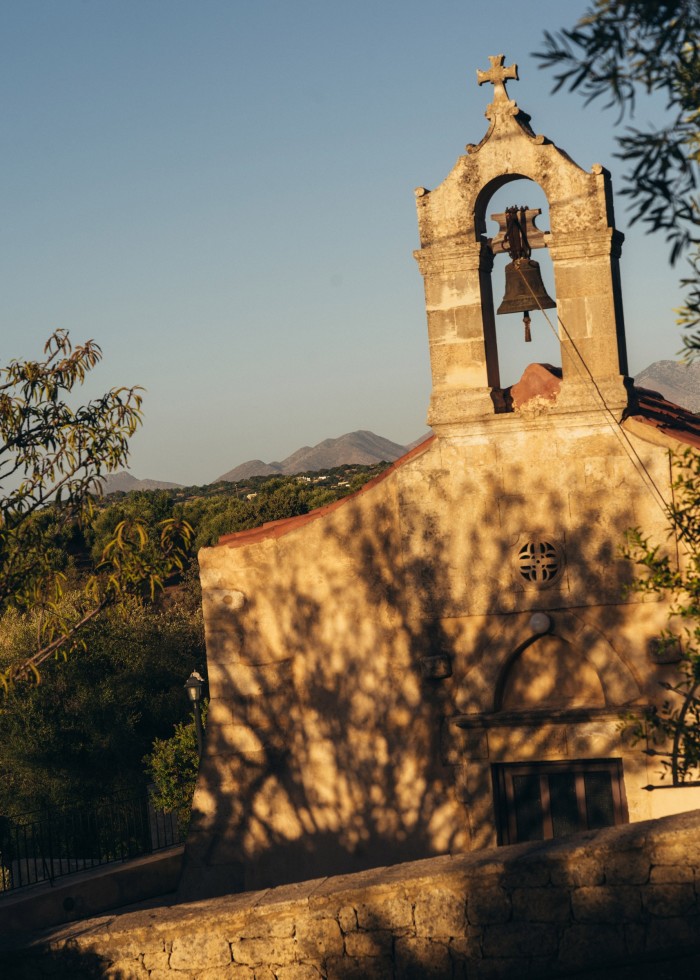
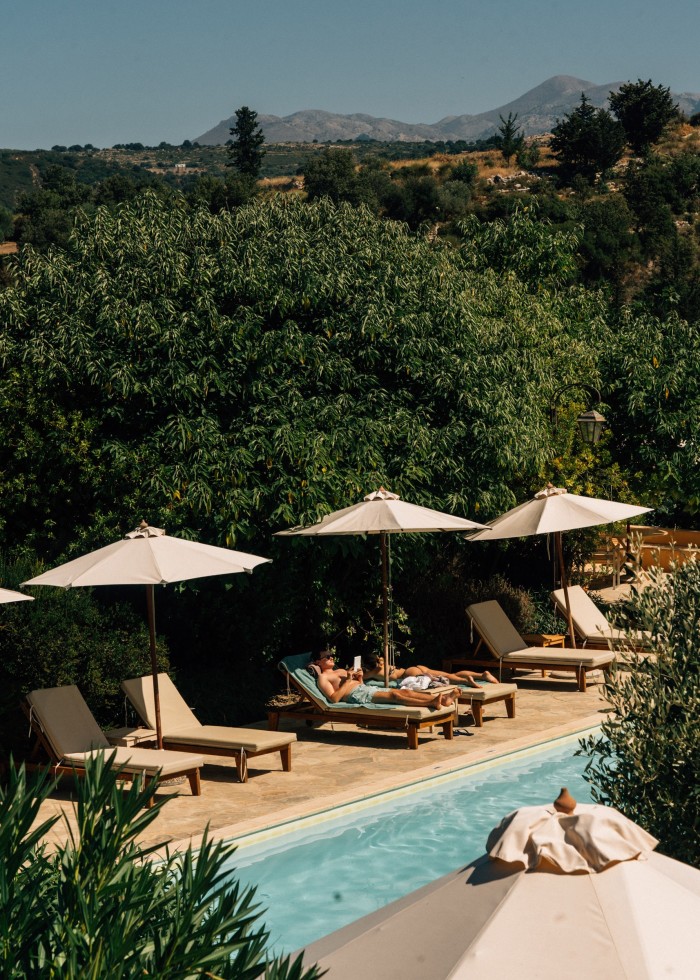
Those pre-industrial rhythms have long attracted artists. In 1960 the English painter John Craxton moved into a tumbledown house in Chania’s harbour and set up a two-floor studio. Two decades later, the British artist Tacita Dean – then a teenager – met him when her family rented a house across from his. “He lived in the most wonderous space,” she says, “painting with views over Chania’s harbour.” Last spring she travelled to Crete with her own family to stay in Craxton’s house, where she produced a short film about the artist (currently on show at Pallant House Gallery, Chichester). In between filming, Dean explored the White Mountains and ended up at the farm restaurant Dounias, where the owner, Stelios Trilyrakis, grows the ingredients used for the traditional dishes he serves, many of them slow-cooked over fire. Dean was too late for the full lunch service, but was still able to have what she described as “the perfect meal”: bread warm from the wood-fired oven, roasted goat and wine.
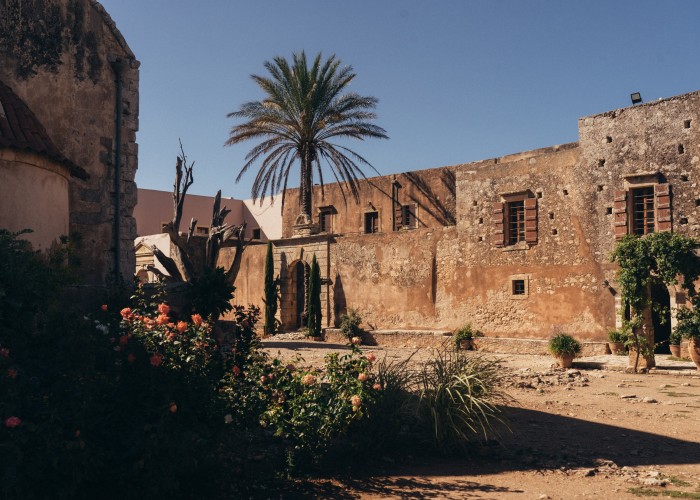
The saying “it takes a village” resonates especially in central and western Crete, where compelling regenerative projects are flourishing in once-neglected hamlets. In Margarites, a 90-minute drive from Chania and a centre of pottery production since the Minoan times, there are at least a dozen ceramists with working studios, including Giorgis Dalamvelas, the Cretan founder of Keramion, whose designs are sold worldwide. One of the most beautiful rural properties on the island, Kapsaliana Village, is also in this area, the mountains above Rethymno. A hospitality project with 25 suites and a standalone villa, surrounded by acres of olive groves and gardens, it’s owned and managed by Myron Toupoyannis, a born-and-raised Cretan who since the ’90s has been buying up Kapsaliana’s abandoned 17th-century houses. It’s a work in progress, with decades of slow renovation resulting in a unique estate complete with an outdoor cinema, a stone pool surrounded by violet bougainvillea, and an exceptional restaurant serving beautifully plated traditional dishes. Two more houses will be completed by 2025.
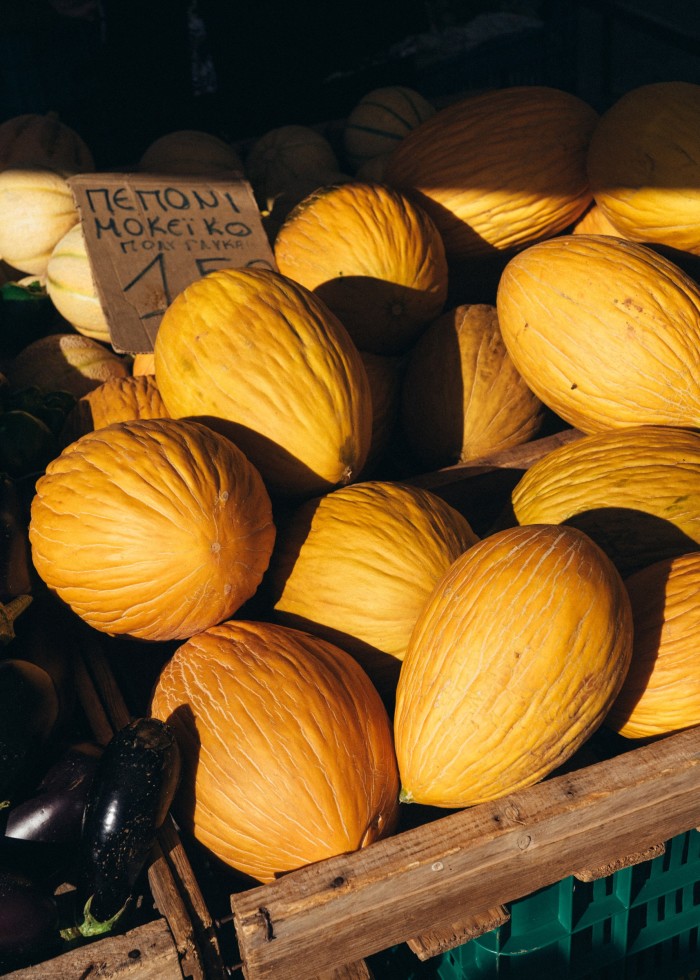
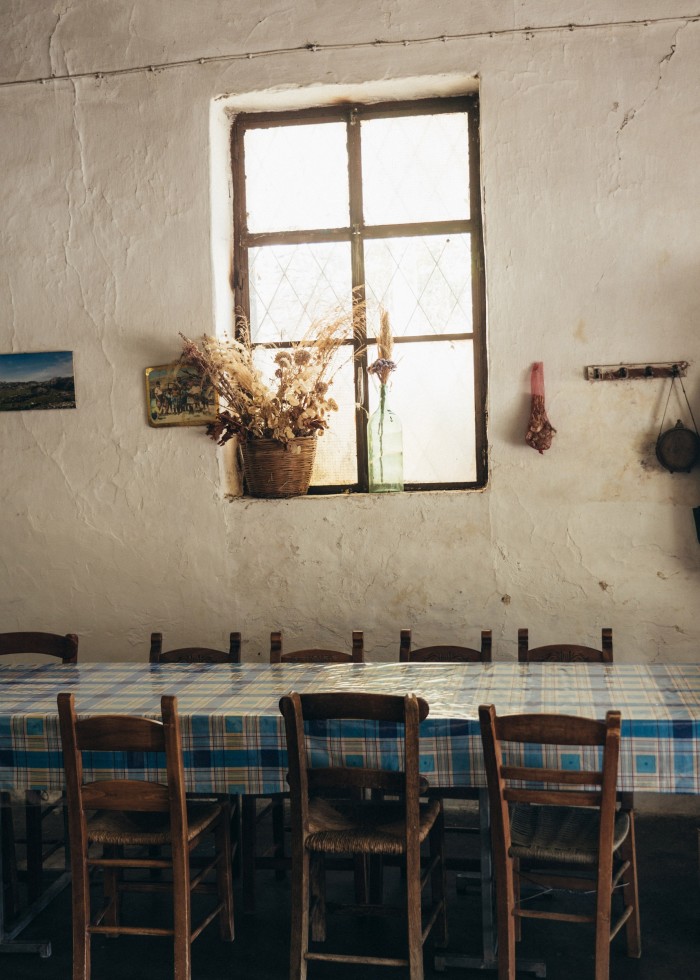
But it’s in the village of Melabes, due south of Kapsaliana, that you find one of the most inspiring initiatives. Five years ago, the 30-year-old winemaker Iliana Malihin set out to build up both a collective and a natural wine label from patchworks of pre-phylloxera indigenous grapes. She started with five farmers; now she works with 40, restoring these ancient vineyards, protecting the land they’re on and paying the farmers a fair wage. In 2022, hundreds of thousands of acres burned across this part of the island, destroying many vineyards and dozens of ancient olive trees. Malihin’s appeals to the local mayor since the beginning for wildfire protections, such as organising a volunteer firefighter team and investing in a meteorological station, had been futile; “We had to take it into our own hands,” she says. A group of friends – a mix of locals, Greek wine lovers and importers – crowd-funded €50,000 and Malihin used it to create a fire-protection plan for Melabes.
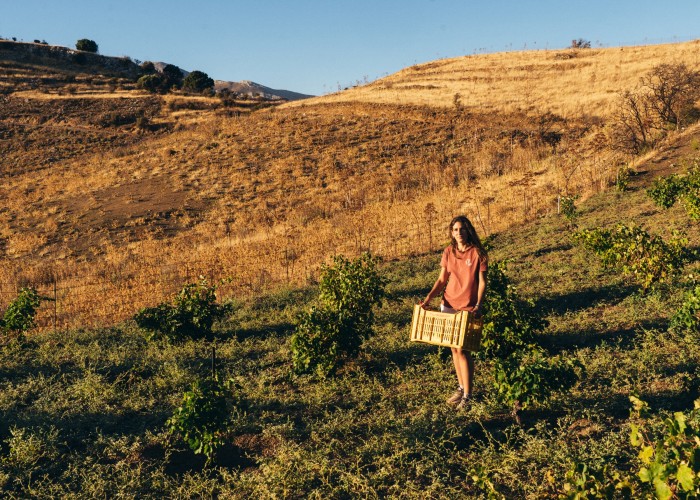
Over the summer, she says, she saw “miraculous” regrowth of hundreds of the burnt old vines, which had been laboriously cut down to their bases. It’s a literal back-to-the-roots narrative, one that illustrates both the value of and the need for nurturing and investing in the island’s smaller, simpler, as-yet untapped places. “I want to see Melabes fill up with young people,” she says. “I want to see the island’s villages become vibrant and alive again.”
Gisela Williams consulted the Crete travel specialists SteMa Journeys; founders Maria Passarivaki and Stefanos Gogos connect travellers to lesser-known parts of the island. Ammos Hotel; Kapsaliana Village Hotel. Next spring the Domus Blanc, sister property to Domus Renier will open in a historic villa in Chania
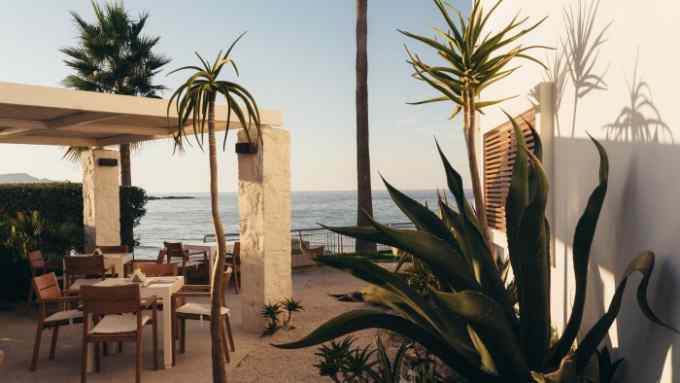
Comments